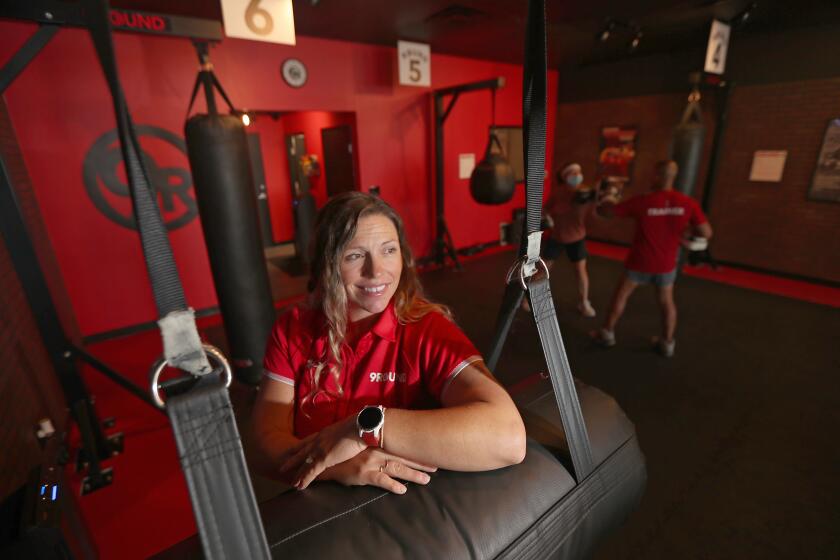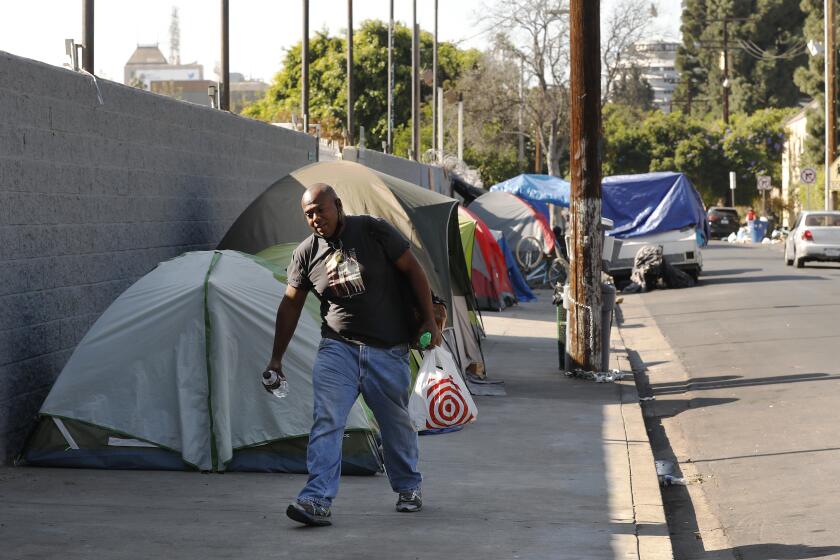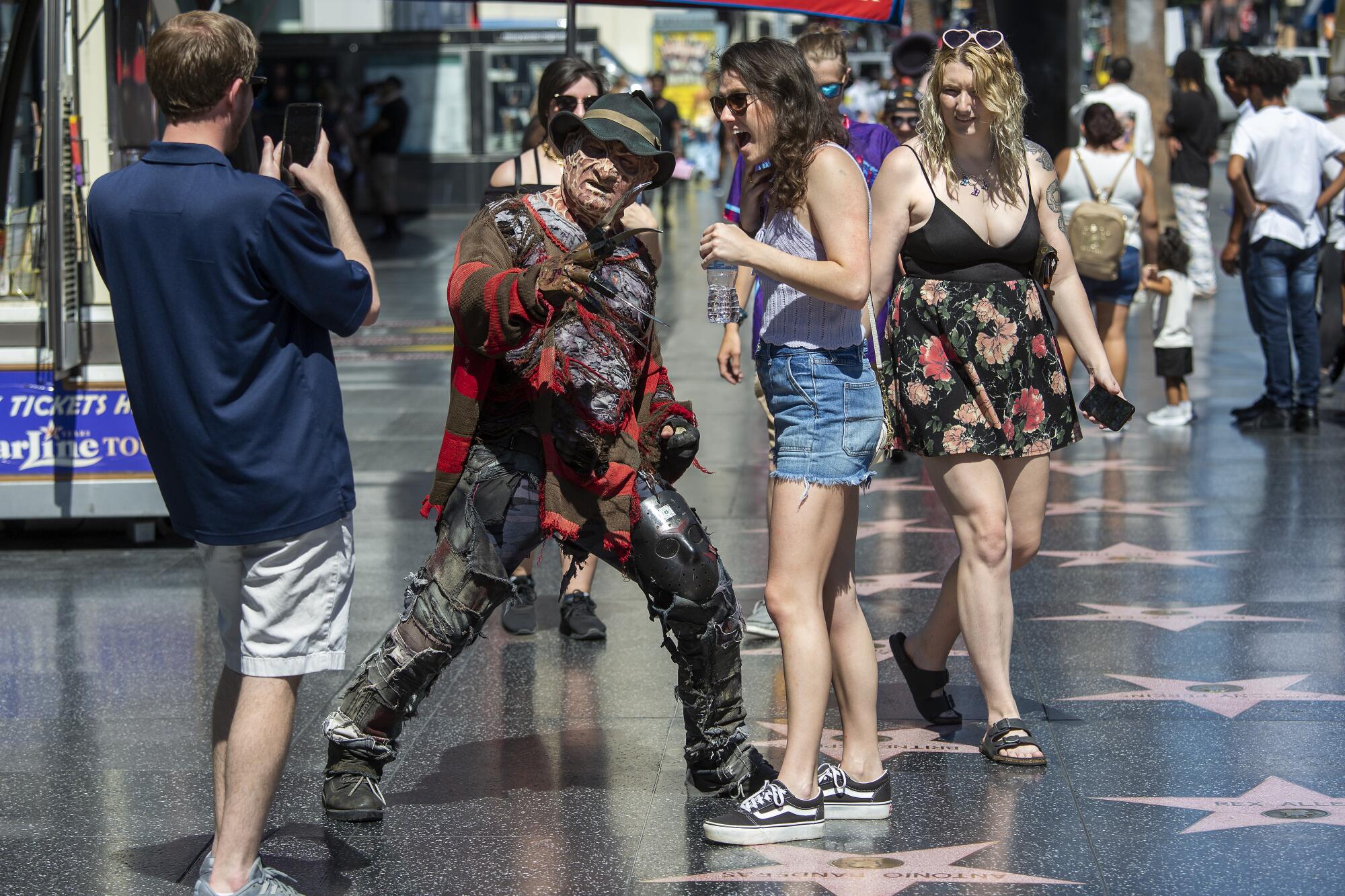
- Share via
Hours before “Hamilton” was set to open last year at the Pantages Theatre in Hollywood, performances of the Broadway hit were canceled as edicts to prevent the spread of a highly contagious new coronavirus set off a cascade of woes.
Near the Pantages, a restaurant known for its hearty American food was stocked up with its signature dessert soufflés and dinner fare, ready to serve crowds of “Hamilton” fans. Suddenly, theaters, restaurants and other businesses in Hollywood were ordered to close.
A lot of food was about to spoil, said Richard Falzone, owner of Off Vine, a 31-year-old restaurant in a historic Craftsman-style cottage near Sunset Boulevard and Vine Street.
“I told staff to take everything they could,” he said, “or throw it away.” Falzone remembers the date well: “March 16, 2020 — I’ll have that in my mind forever.”
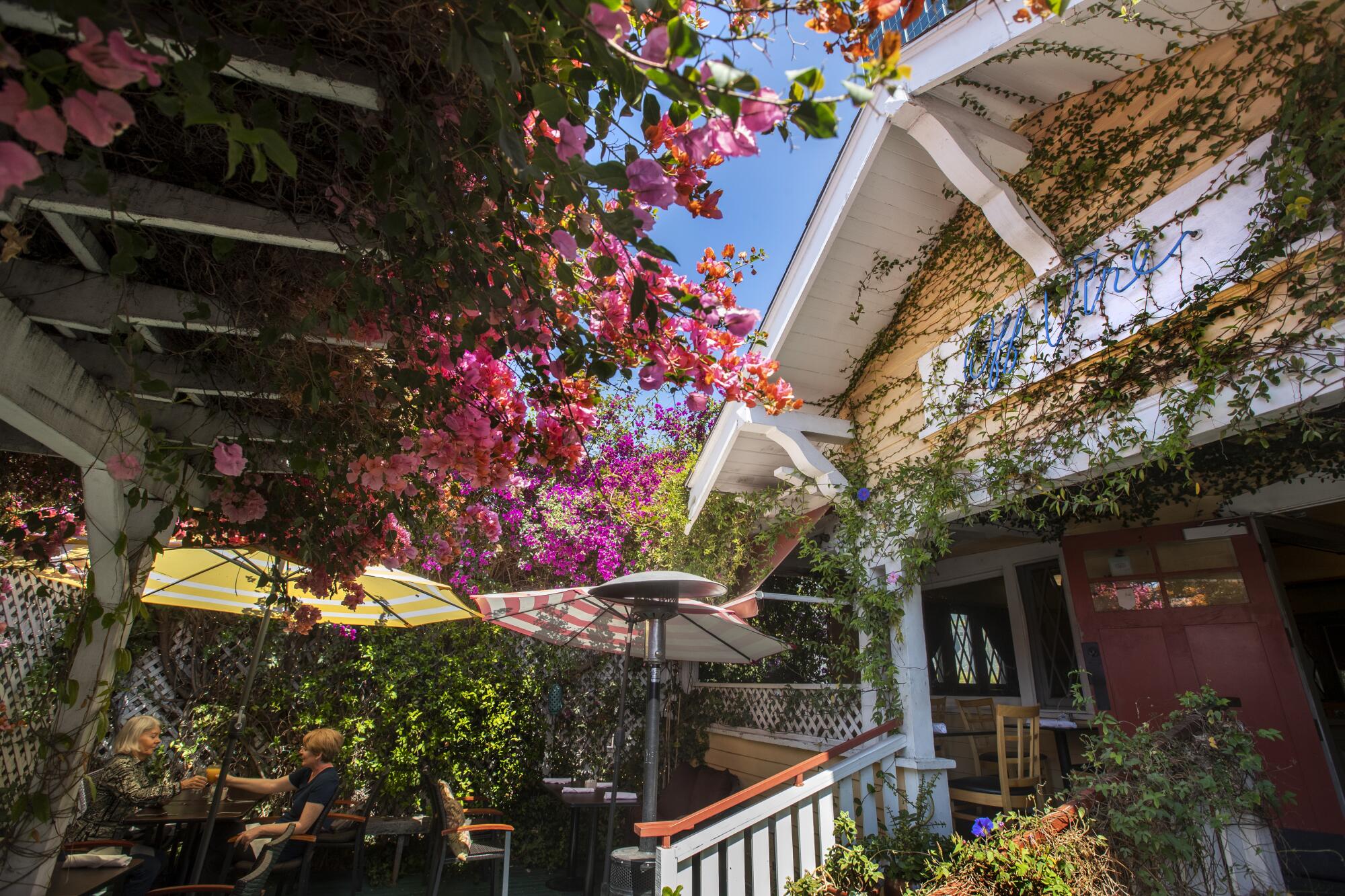
More than a year later, Falzone faces different challenges, as customers return and he looks forward to “Hamilton” finally opening next month. He’s shorthanded, because only three of the 12 servers he laid off during the downtime have returned. Cooks and dishwashers, too, are hard to find.
“I need to hire eight people, and if I don’t, then I am going to lose a lot of money, because I am not going to pack my restaurant with only one server,” he said. “That’s a nightmare we have in the industry.”
Boom, bust and hope for another boom — that’s the story of Hollywood today, as the neighborhood labors to spring back from the pandemic and its economic fallout.
About 70% of street-level businesses in Hollywood responded to instances of vandalism and theft that coincided with last summer’s overwhelmingly peaceful racial justice protests by hunkering down behind sheets of plywood, said Kris Larson, president of the Hollywood Partnership business improvement district.
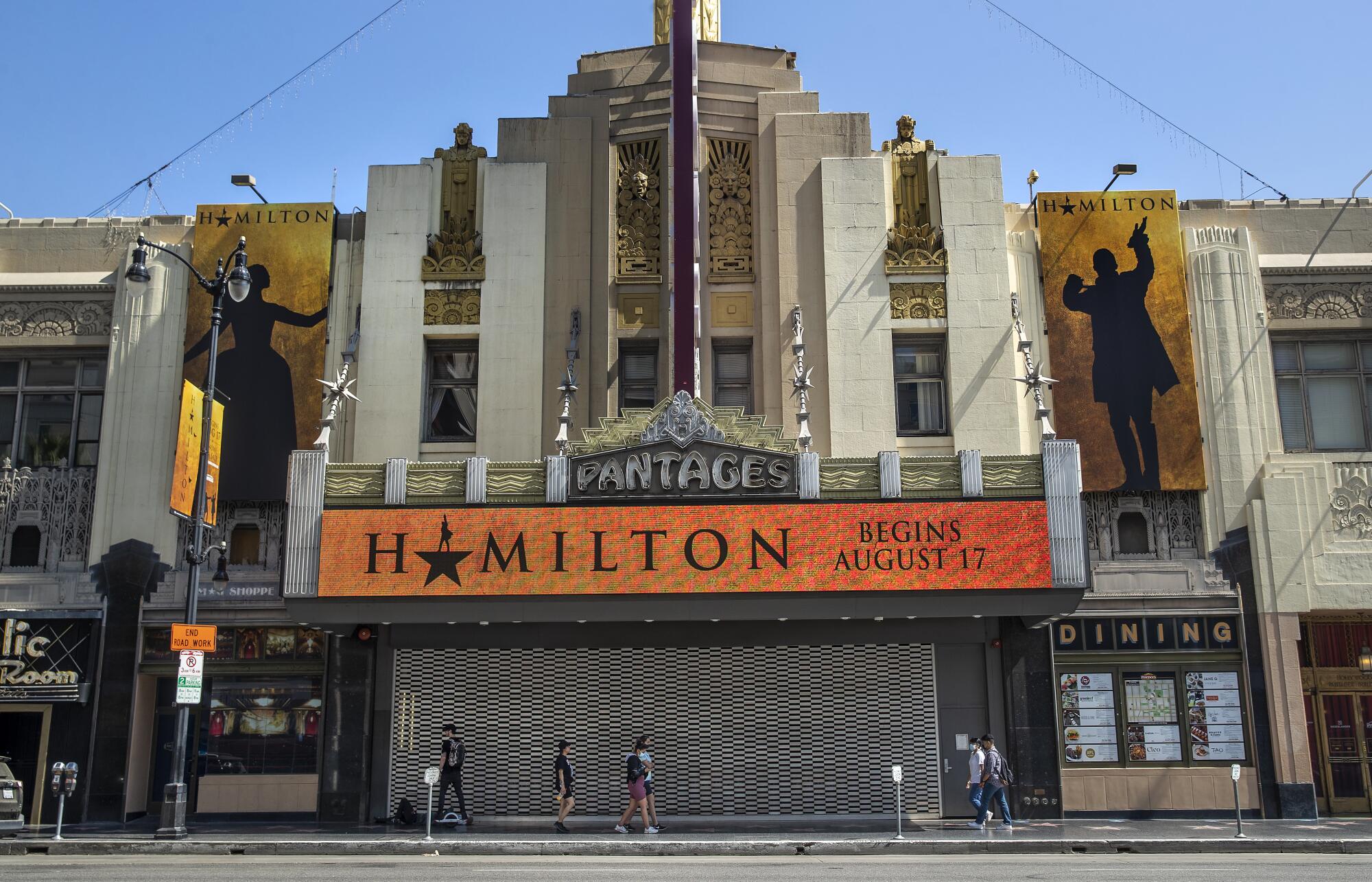
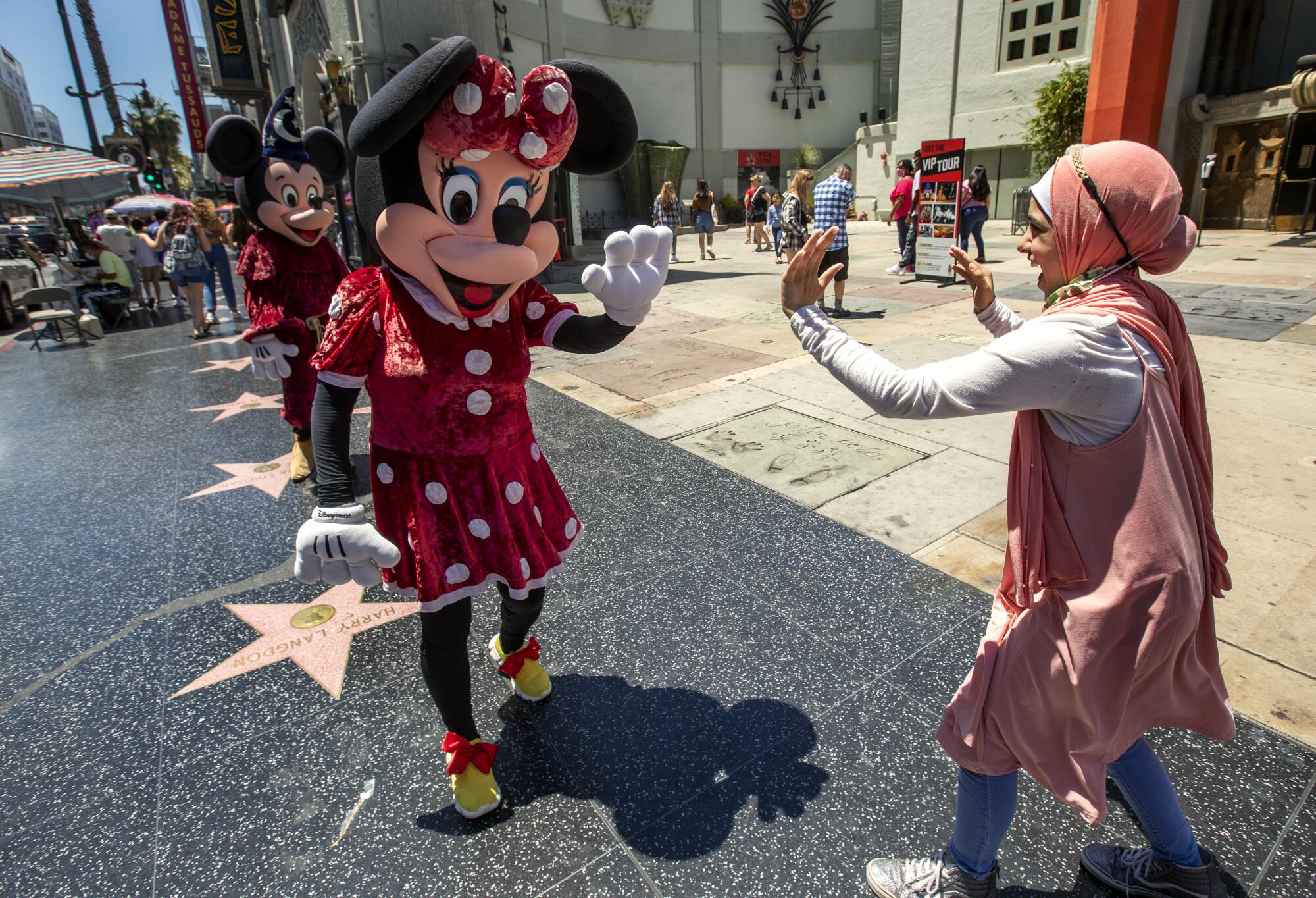
Some stores remain boarded up because they have gone out of business or have yet to relaunch after closing for the pandemic. Larsen estimates that 10% are gone for good, but the number could rise when government restrictions on evictions for nonpayment of rent are lifted.
High-profile COVID-era casualties include the upmarket Paley restaurant in Columbia Square on Sunset Boulevard and ArcLight Hollywood, the cinema complex that included the landmark Cinerama Dome theater.
Many others have hung on. “Somewhat miraculously, a lot of the mom and pop shops survived,” Larson said.
Bigger stores and restaurants with deeper financial resources have better weathered the economic downturn. Katsuya, a sushi restaurant at Hollywood Boulevard and Vine that is known to draw celebrities, is set to open by the fall after being closed since March 2020. Boards were removed from its windows last week.
Employers in California and the U.S. are scrambling to fill jobs as the dust from the pandemic begins to settle. Just don’t call it a labor shortage.
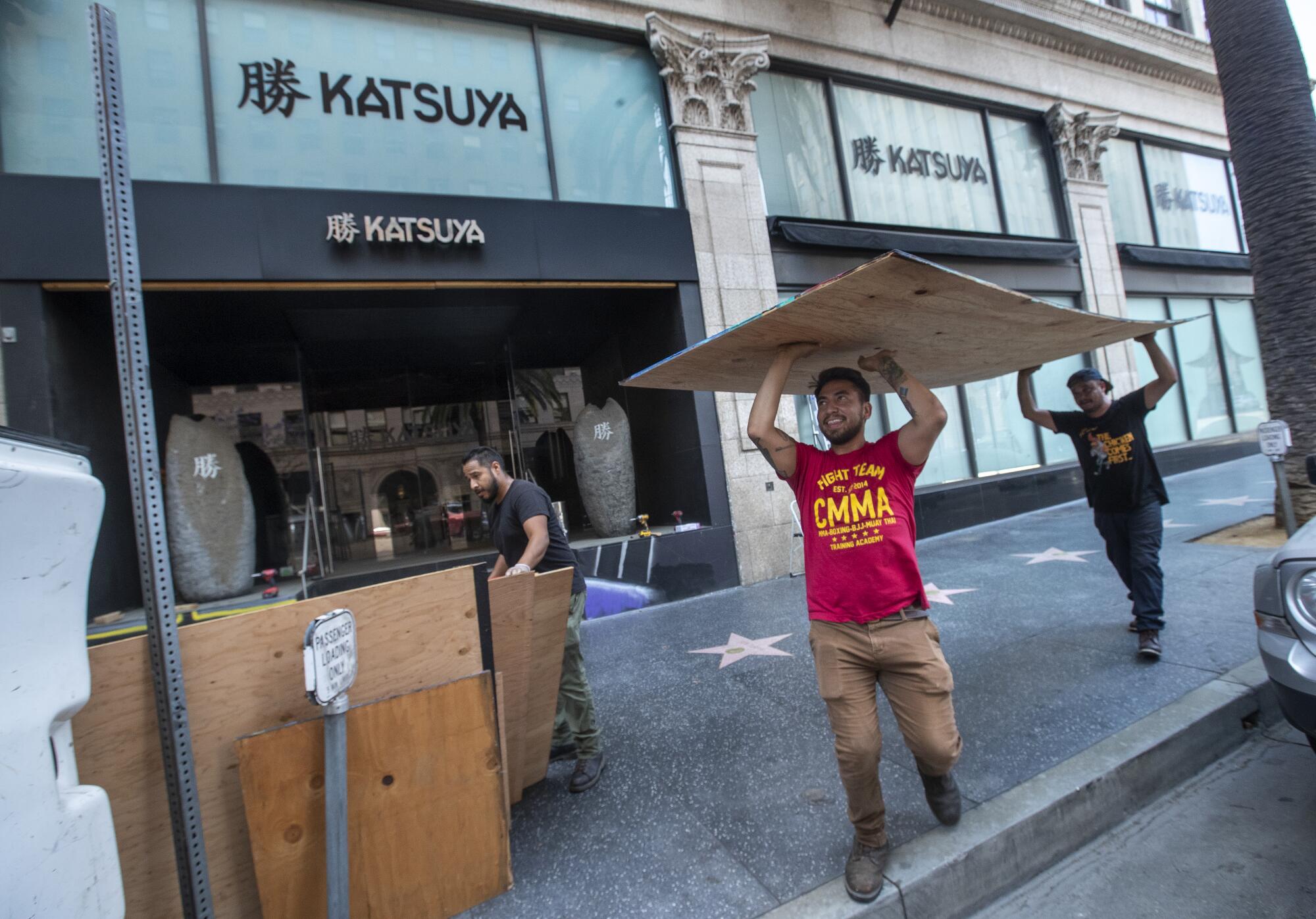
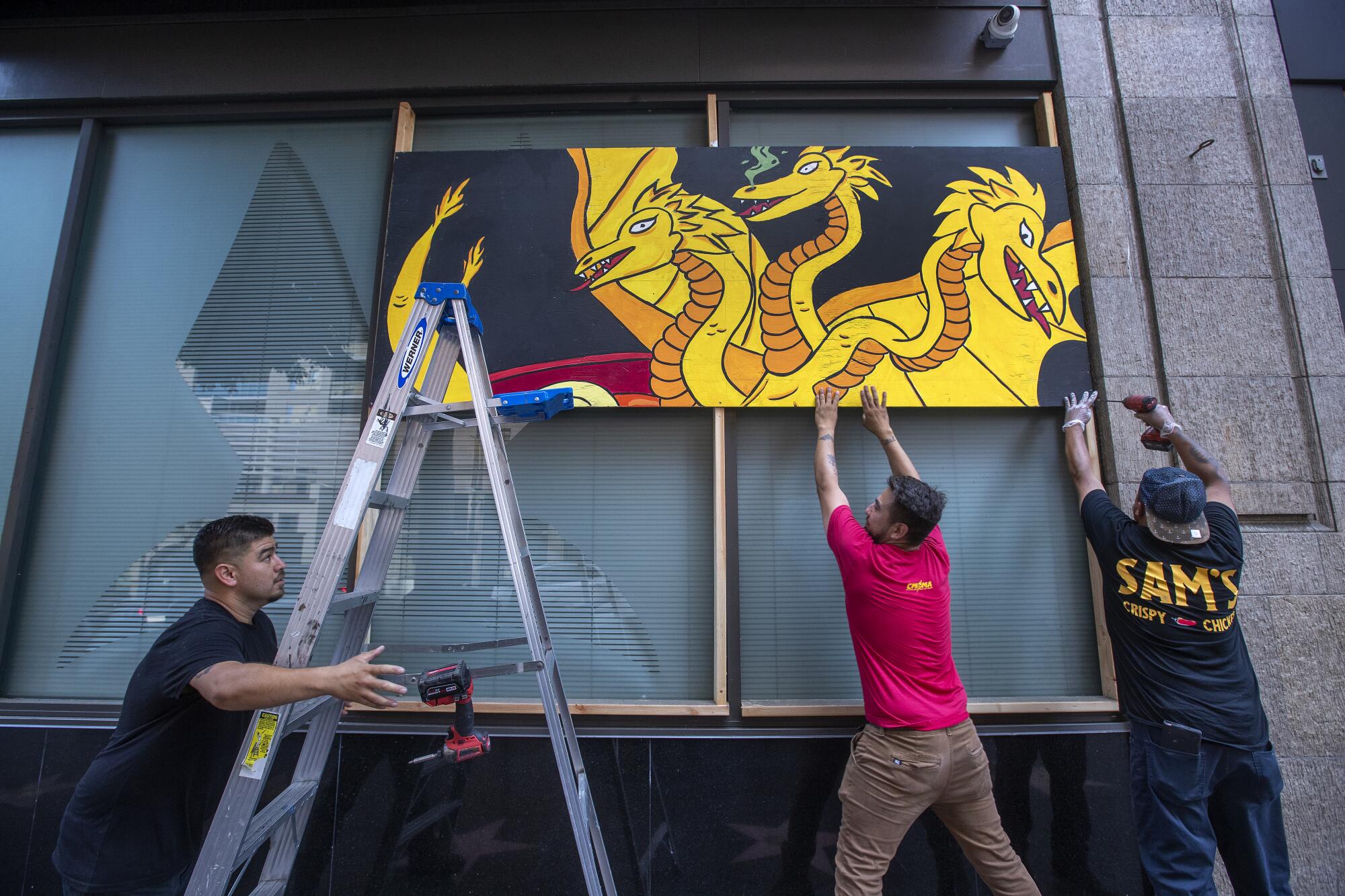
Katsuya opened in Hollywood in 2007 and served 8,000 customers a month before the shutdown, said Jerry Garbus, senior director of operations for parent SBE, an international hospitality company. He noted that the Hollywood location is important in part because of what it represents to people outside the region.
“The dynamic energy and the glamour of Hollywood has really become synonymous with Los Angeles as a whole and the perceptions people have about L.A. and what emotions are evoked when people think about Los Angeles,” Garbus said.
Though Hollywood is known for tourism and nightlife, it’s also one of the most substantial office markets in the region, with about 5.9 million square feet to rent, according to real estate brokerage CBRE. The absence of workers who moved their jobs home during the pandemic has been a drag on the recovery, Larson said.
“We need to get them back,” he said. “And that’s true for every city in the country.”
When — or whether — workers return to the office is a matter of uncertainty for many. Some businesses have started to ease back into the workplace, while others are offering flexible work-at-home policies that are expected to evolve in the months ahead as people adjust to a post-pandemic work style.
Hollywood’s biggest office tenant is Netflix, which is expected to bring its employees in after Labor Day. The end-of-summer holiday is a marker for many companies to return to the office, although some other entertainment businesses, such as ViacomCBS and Walt Disney Co., have said they might begin to come back sooner.
Production remains hampered by restrictions necessary for keeping the COVID-19 pandemic at bay, but filmmakers and studios are optimistic that Hollywood is finally reopening.
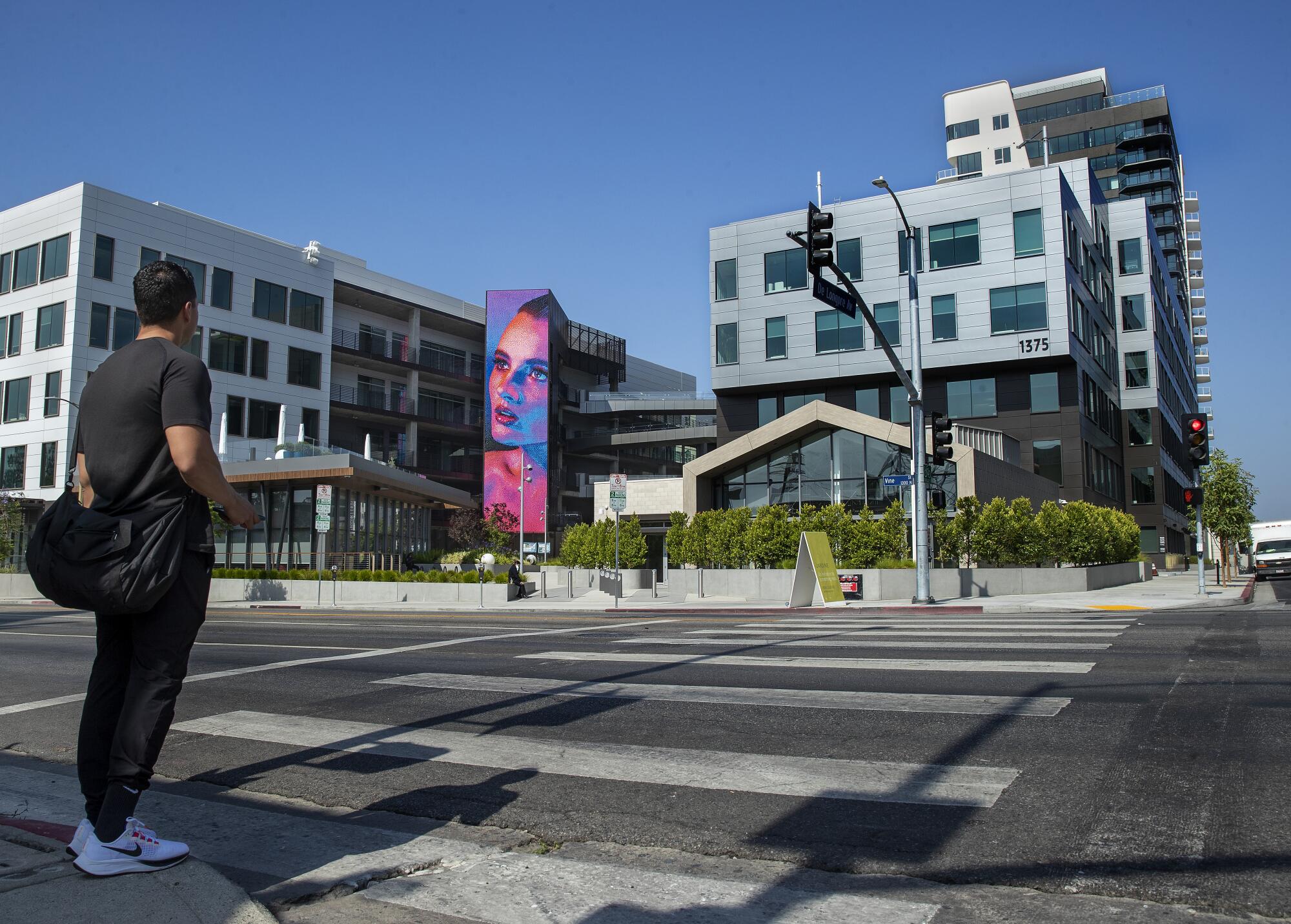
One of Netflix’s landlords is Kilroy Realty Corp., which has three office complexes in Hollywood, including the recently completed $450-million On Vine office, apartment and retail center south of the former ArcLight theaters and Cinerama Dome.
Netflix leased all the office space at On Vine and is preparing its new digs for occupancy. The streaming giant is emblematic of the merging of technology and entertainment, which has been especially beneficial for neighborhoods such as Hollywood, Culver City and Burbank that have long been home to showbiz-type businesses, said Rob Paratte, head of leasing and business development for Kilroy.
“We have been, and are, very bullish on Hollywood,” he said. “You are going to continue to see dramatic change.”
Paratte said he is looking for other sites in the area where the company can build, because people in entertainment often need to work side by side.
“It’s pretty hard to make a film from home,” he said.
But the optimistic proclamations of Hollywood boosters are sounding alongside a humanitarian crisis gripping Los Angeles, as thousands of people find themselves living on city streets.
Hollywood did its own homelessness count after the official countywide count was canceled this year. Volunteers organized by the Hollywood 4WRD coalition tallied 1,513 people without homes in Hollywood and East Hollywood, compared with 1,714 people in the January 2020 official Los Angeles Homeless Services Authority count for the area, a 12% decline.
But life has gotten even more difficult for people without housing, the coalition of businesses, churches and nonprofit groups determined. With businesses and libraries closed, homeless people have had less access to food, restrooms and places to wash.
After the countywide homeless count was canceled, Hollywood activists conducted their own. The surprise: Street homelessness was down 12% in Hollywood.
Off Vine owner Falzone said homelessness “challenges the way we understand our city’s value system. We are supposed to be better than this. We shouldn’t allow people to die on our sidewalks and waste away in this environment.”
The business community is among those focused on improving the homelessness crisis, Larson said. Hollywood Partnership last year added to its efforts by establishing a street outreach team trained to build relationships with homeless people and help them get services and assistance.
“Homelessness is by far the No. 1 issue affecting Hollywood,” he said. “Never does a day go by that the topic does not get introduced into our work. ... It is top of mind and in the line of sight for everyone.”
The pending return of office workers is a related concern, he said. “There are people with options who are not going to want to walk down streets of Los Angeles and have to navigate those types of conditions.”
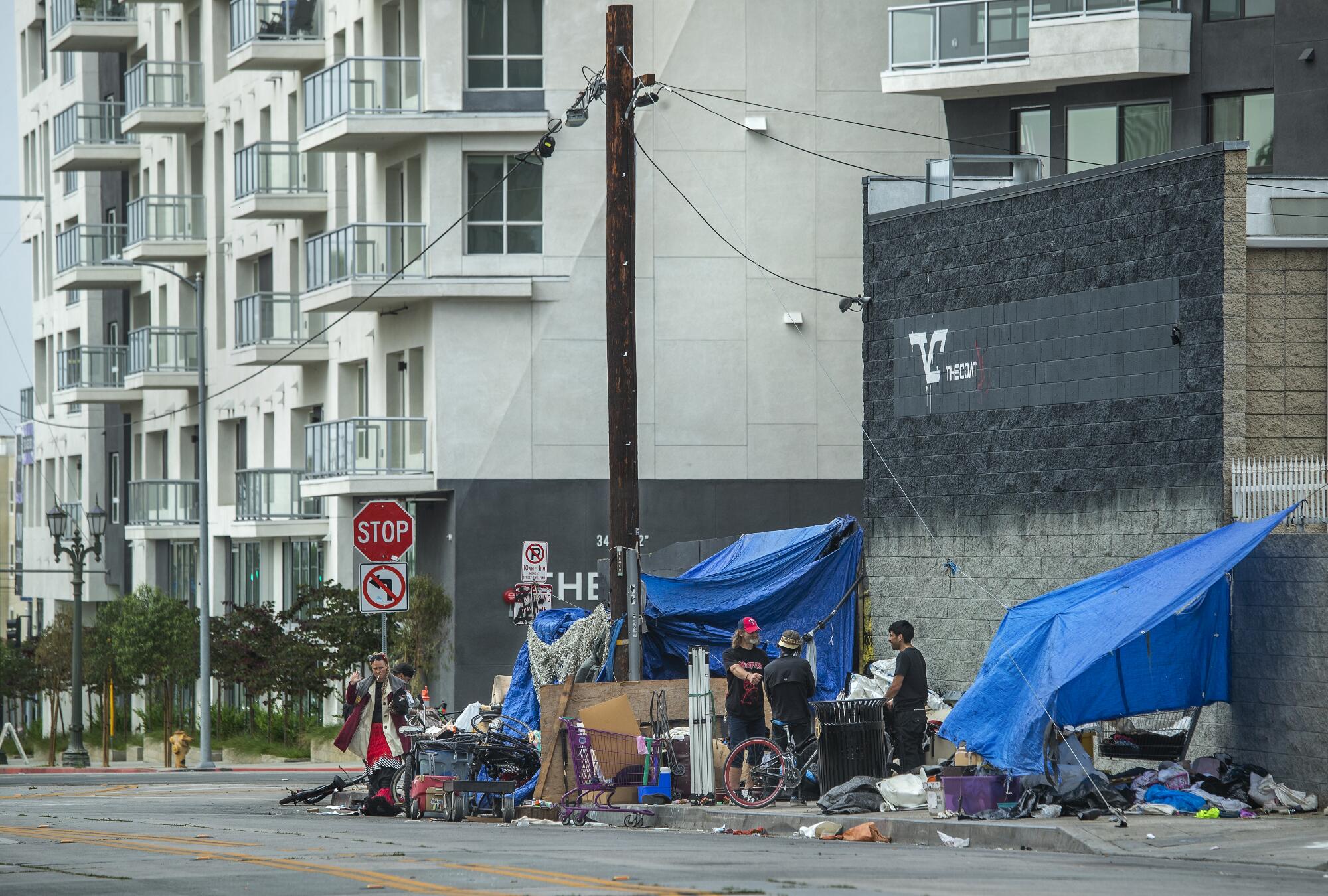
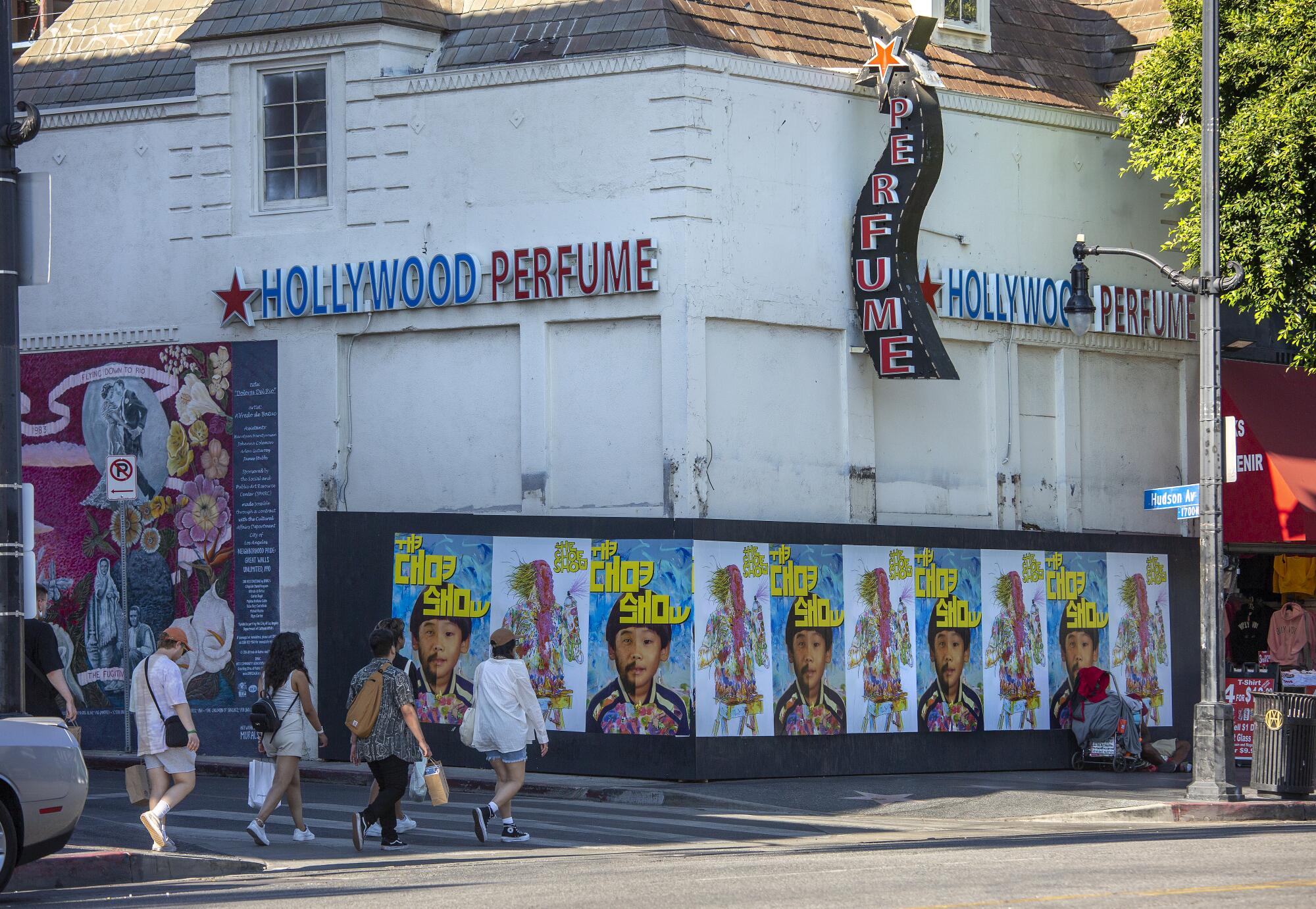
More than 23% of Hollywood office space is unleased, CBRE said, which is high for the region.
Doubts about whether white-collar workers will come back makes the vitality of the office market “the biggest question mark” affecting Hollywood’s revival, Larson said.
Star-studded movie premieres have returned to the reopened El Capitan and TCL Chinese theaters, and visitors are booking hotel rooms again. The recently built hotels Thompson Hollywood and Godfrey Hotel Hollywood are taking reservations for next month.
With soundstages in short supply and production on the rise, a developer plans to build a new studio in Hollywood.
Attractions such as Hollywood Wax Museum, Madame Tussauds Hollywood and Ripley’s Believe It or Not are up and running. A $100-million makeover of the Hollywood & Highland shopping and entertainment center is underway.
Challenges faced by restaurants and stores are more likely to be centered on finding enough workers than on government regulation or lack of consumer confidence, as they were during the pandemic, Larson said.
Patrons include people who are taking trips to Hollywood as they emerge from lockdown, research by Hollywood Partnership suggests. Pedestrian activity on Hollywood Boulevard is back to about 80% of what it was before the pandemic, and about 60% of the people strolling the Walk of Fame are from more than 250 miles away, according to cellphone data tracked by the business improvement district that reveals owners’ ZIP Codes.
“We are seeing tourism rebound faster than anticipated,” Larson said. “Generally speaking, people in Hollywood are preparing for a big summer.”
Looking ahead is entrepreneur Thaddeus Smith, who is renovating the landmark Earl Carroll Theatre on Sunset Boulevard for a January reopening. The Streamline Moderne-style showplace, which opened in 1938, was one of Hollywood’s most boisterous supper clubs and was known more recently as a soundstage for Nickelodeon Studios.
The update, which could cost as much as $4 million, will transform the Earl Carroll into a concert and event venue for as many as 1,800 people, Smith said, with new bars and kitchens. Success depends on restoring its over-the-top historic glamour, a notion Smith wishes other local businesses would embrace.
“This isn’t Orange County. This is Hollywood,” he said. “You damn better be ready to make it Hollywood. L.A. really needs it.”
More to Read
Inside the business of entertainment
The Wide Shot brings you news, analysis and insights on everything from streaming wars to production — and what it all means for the future.
You may occasionally receive promotional content from the Los Angeles Times.
